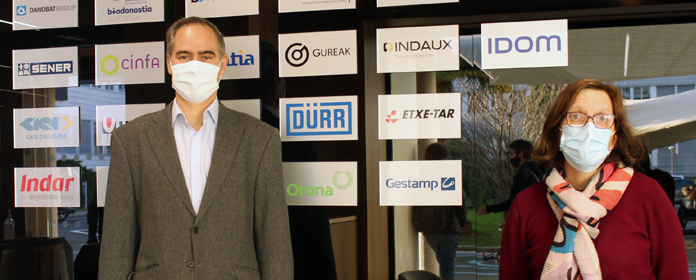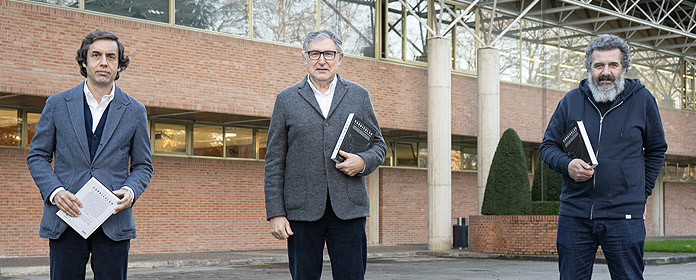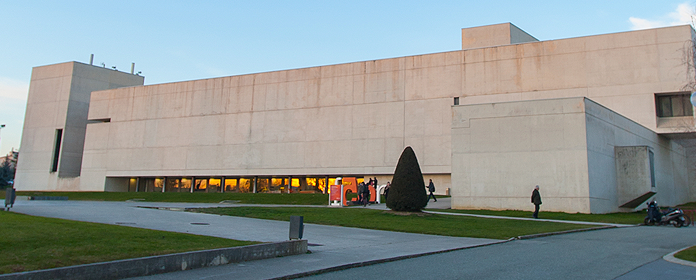Clínica Universidad de Navarra exceeds 1,000 cochlear implants to treat deafness in its patients.

Juan Luque is the latest patient to regain his hearing thanks to a cochlear implant placed by the team of specialists at the Clínica Universidad de Navarra. His intervention now exceeds the 1,000 performed by this medical center and is integrated in the Cochlear Implant Program of Navarre which the Clinic pioneered 25 years ago. It is a program of partnership between public and private health care maintained with the Navarre Health Service. Navarra Health Service. To commemorate the importance of cochlear implants in the treatment of deafness, its international day is celebrated on February 25.
A 70-year-old resident of Barañáin (Navarra), Juan Luque began to notice the first symptoms of hearing loss a decade ago. Since then he has been able to solve the problems arising from his deafness thanks to a hearing aid. However, despite the device, in recent times his hearing loss has been increasing.
For this reason, seven weeks ago, this patient went to operating room so that the team of Dr. Manuel Manrique, MD. Manuel Manriquedirector of the Program and specialist in Otorhinolaryngology of the Clinic, to place a cochlear implant. The surgery was successful. A month later, time required for healing, the microphone, processor and sound transmitter were installed and connected to the internal receiver. A little more than two weeks ago, Juan Luque began to perceive sounds with the operated ear. According to the patient, immediately after the connection, he began to hear clearly.
Leading the way in cochlear implantsThe first patient of the cochlear implant program was Veronica Julien, who in 1989 was fitted with one of these devices to solve the bilateral deafness she suffered from. Today, the cochlear implant placed in Juan Luque has surpassed the one thousand mark. A figure that places the Clinic at the head of the national ranking of experience in this treatment for hypoacusis. To this experience is added the fact that the Clinic includes among its indications for this operation a very wide range of patient ages: from 5-month-old infants to 85-year-olds.
Dr. Manuel Manrique, who has already performed the first of the Clinic's thousand interventions, describes the cochlear implant as "a device capable of replacing everything that constitutes the peripheral organ of hearing, the outer, middle and inner ear. Its application is indicated in those cases in which the inner ear and, within it, the cochlea, presents a practically total destruction of its cells. It is then when we bypass this organ, stimulating, through the implant electrodes, the cochlear nerve and thus the auditory pathway", describes the ENT specialist.
procedure surgicalThe cochlear implant program is attended by a team multidisciplinary made up of different specialists dedicated to the diagnosis, treatment and subsequent rehabilitation and personalized follow-up of patients. It is performed in both children and adults.
The surgical procedure for the cochlear implant is performed under general anesthesia and lasts approximately one hour. "Its main goal is the placement of electrodes inside the cochlea to stimulate the cochlear nerve directly," argues Dr. Manrique.
"It is a surgery that is generally well tolerated by the patients. It usually requires two days of hospitalization and they are allowed to get up the same afternoon that the surgery has been performed and resume a normal life immediately postoperatively," he points out.
One month after surgery the patient begins his aural rehabilitation with financial aid from the follow-up medical team. His specific stimulation parameters and the personalized sound coding strategy are then set according to the patient's new hearing thresholds.
Main program milestonesOctober 1989 was the starting point, the date of the first cochlear implant performed by the Clinic's team on its first patient: Veronica Julien. Two years later, in 1991, another remarkable event was the implantation of a deaf-blind patient. In 1992, the young age of the patient, 12 months, was another milestone in the program. A decade later, in 2002, a further step was taken with the intervention of a girl less than a year old.
With regard to technological progress, it is worth mentioning 1996, when Dr. Manrique's team began to systematically apply new techniques of minimally traumatic surgery in the placement of implants. Ten years later, in 2006, these same specialists performed the first simultaneous bilateral cochlear implant, that is, the placement in the same intervention of an implant in each ear, "procedure which allows the implanted patient to localize sounds, the possibility of better perceiving sounds with environmental noise and thus developing the central auditory system," the specialist enumerates.




